Giang Cao pottery village does not have a history of hundreds of years like Bat Trang pottery village does. Using the dynamism, creativity, and growth of a new 60-year-old craft village, however, Giang Cao increasingly makes its name heard both in the domestic and foreign markets.
Giang Cao village in Bat Trang commune, Gia Lam, Hanoi was formerly known as Dong Sang and later changed to Dong Ca. During the Nguyen dynasty, before the reign of King Dong Khanh (1885-1888), it was named Giang Cao. In comparison to the history of pottery-making villages like Kim Lan (800 years) or Bat Trang (700 years), that of Giang Cao remains relatively young.
There was a time when Giang Cao residents did not have pottery workshops. They were laborers in Bat Trang village instead. During the French colonial period, lived a man named Phan So. He opened a pottery workshop called Ngoc Quang which was the first one in Giang Cao village.
 The kneading and extruding system in the pottery workshop.
The kneading and extruding system in the pottery workshop.
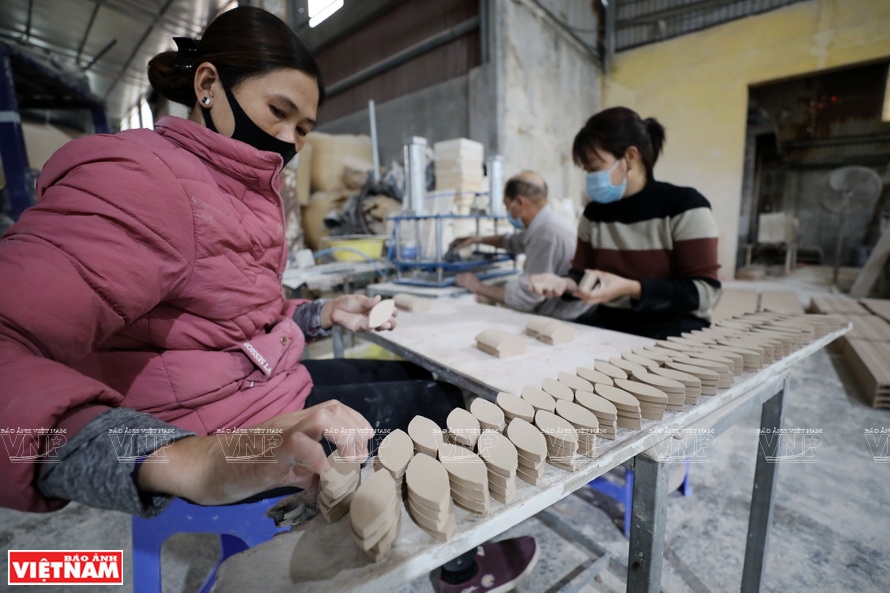
Shaping process.
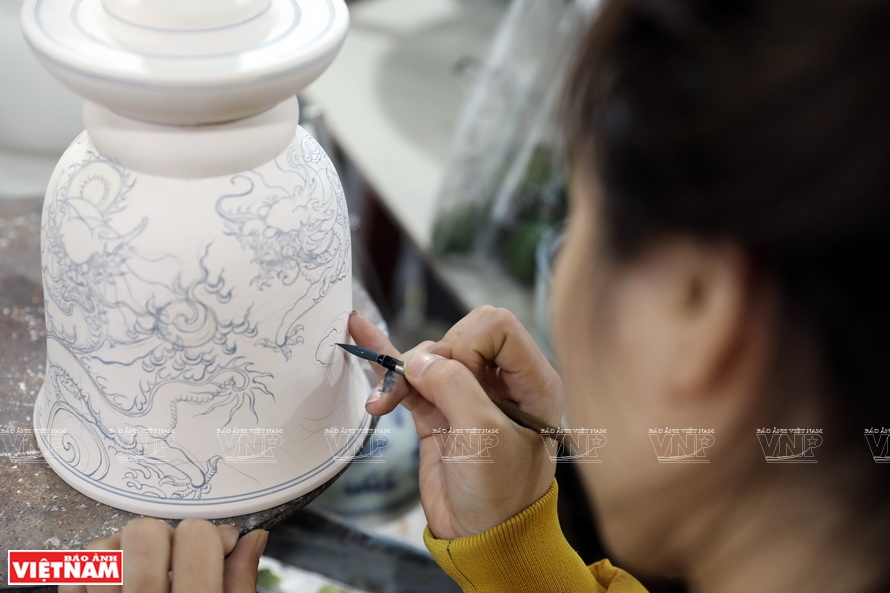 Sophisticated brushstrokes by Giang Cao craftsmen create beautiful products.
Sophisticated brushstrokes by Giang Cao craftsmen create beautiful products.
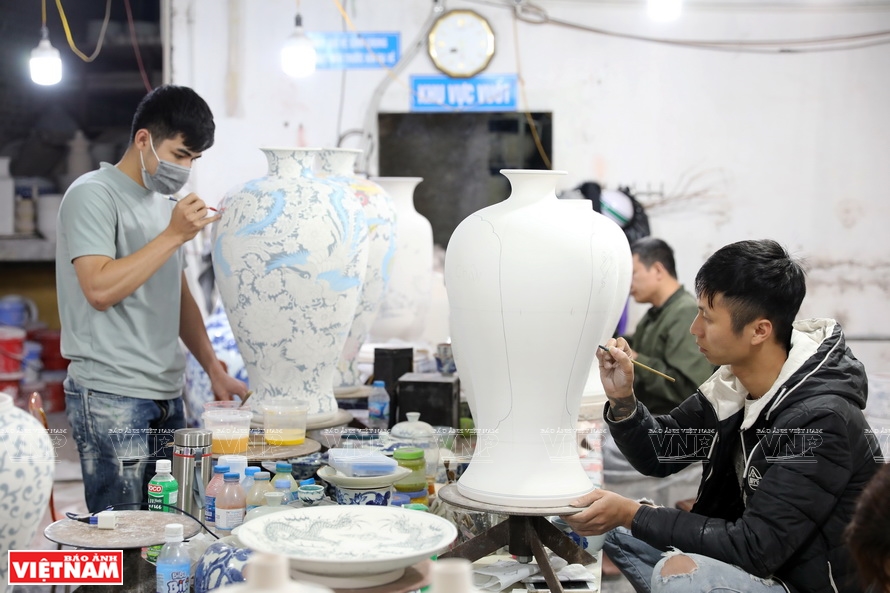
A pottery workshop in Giang Cao village.
 The craftsman forms an artistic painting from pieces of pottery.
The craftsman forms an artistic painting from pieces of pottery.
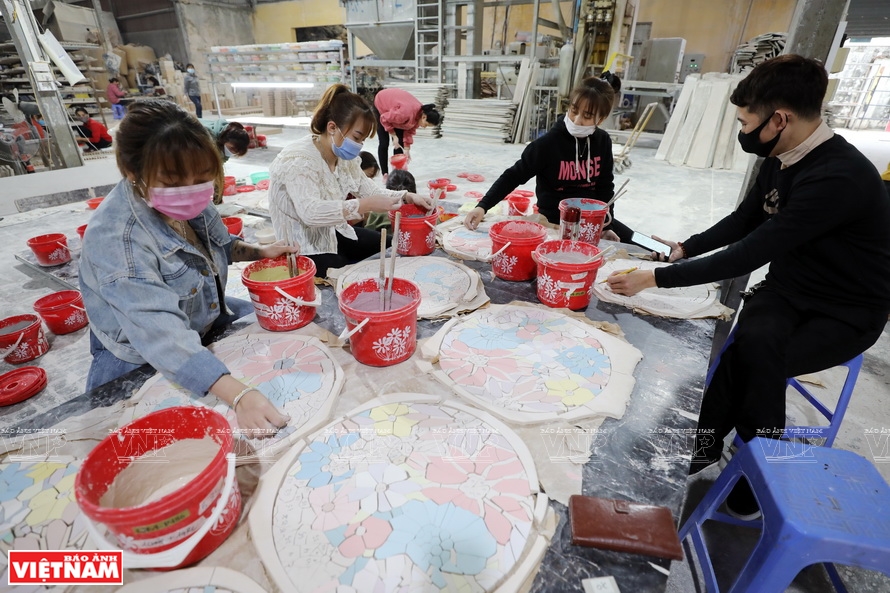 Workers make ceramic paintings at Quang Minh Ceramic Joint Stock
Workers make ceramic paintings at Quang Minh Ceramic Joint Stock
Company in Giang Cao pottery village.
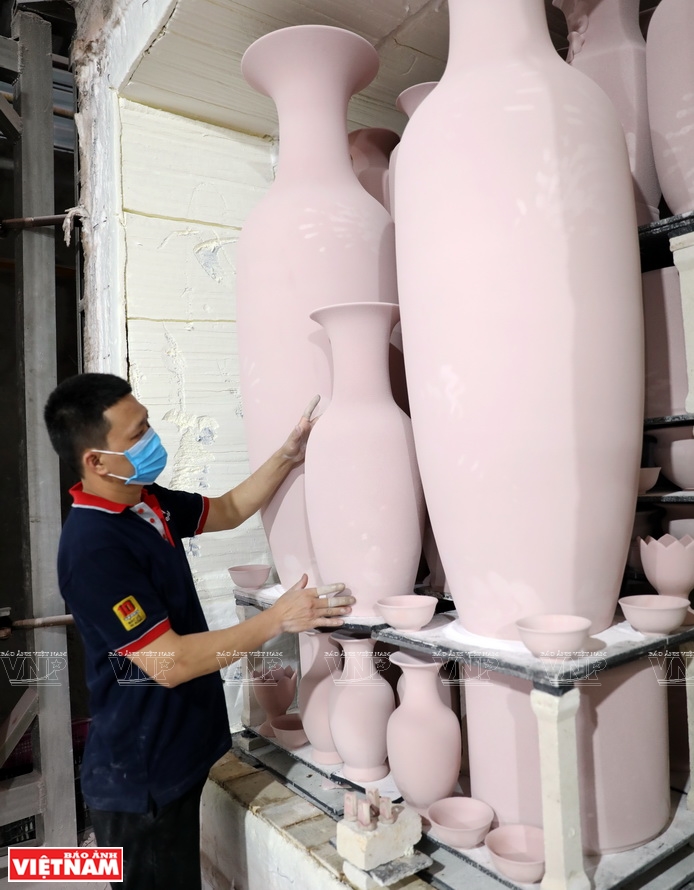
Prepare to put the products into the kiln.
 Nguyen Quy Son, Chairman of Giang Cao pottery club instructs the workers to do the pottery painting.
Nguyen Quy Son, Chairman of Giang Cao pottery club instructs the workers to do the pottery painting.
|
From that first pottery workshop, generations of Giang Cao residents began to build their own. Pottery-making has become a traditional profession pursued by the whole village. More than 900 households in Giang Cao are now making pottery. There are 41 limited liability companies, joint-stock companies, and private enterprises.
According to the statistics of the People's Committee of Bat Trang commune, Giang Cao village contributes more than 50% of the total income of Bat Trang commune.
Nguyen Quy Son, Chairman of Giang Cao pottery club, thought the strength of Giang Cao residents came from their marketing abilities and efficiency at work.
In Bat Trang commune, while Bat Trang village is known as a production area, Giang Cao has its strength in commercial business. When visitors first set foot in Bat Trang commune, they will immediately encounter a series of business shops introducing a full range of ceramics from the commune, decorated delicately and luxuriously. Most of those shops are managed by the people from Giang Cao village.
With their marketing abilities, Giang Cao residents soon found a direction in manufacturing products to meet customers' needs. The biggest achievement in recent years, according to Mr. Son, was that Giang Cao focused on producing architectural ceramics. Yin and yang tiles and ceramic mosaic art were the two most significant lines of their products.
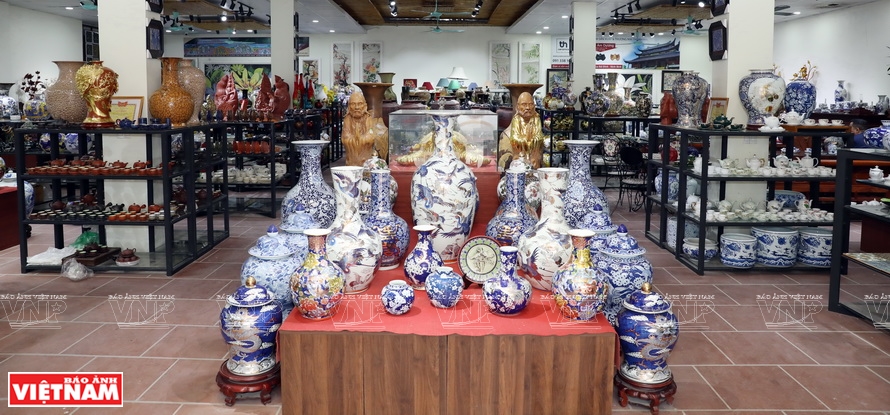
An exhibition of pottery works in Giang Cao village.
|
Giang Cao yin and yang tiles were used for great spiritual architectural buildings of Vietnam such as Bai Dinh pagoda and Tam Truc pagoda. The special enamel line, used in producing yin and yang tiles, was restored by the people of Giang Cao village. Meanwhile, the line of ceramic mosaic art appeared at iconic projects such as the ceramic road in Hanoi and the record ceramic house.
Other than those, the product lines of Giang Cao are mainly restored products and antiques and high-class household products. Giang Cao ceramics are famous for their coating enamels. The one called bup dong is the more popular one. It looks slightly bluish or grayish-white, clear and deep. There are also other types of enamels. Each type has its unique features where only ceramic connoisseurs can appreciate the differences.
Beyond the domestic market, Giang Cao pottery is now present in many parts of the world. The markets for Giang Cao ceramics is not only limited to Asian countries such as Japan, Korea, China, and Thailand, but also the US, Australia, and EU countries.
Story: Thao Vy Photos: Thanh Giang Translated by Hong Hanh